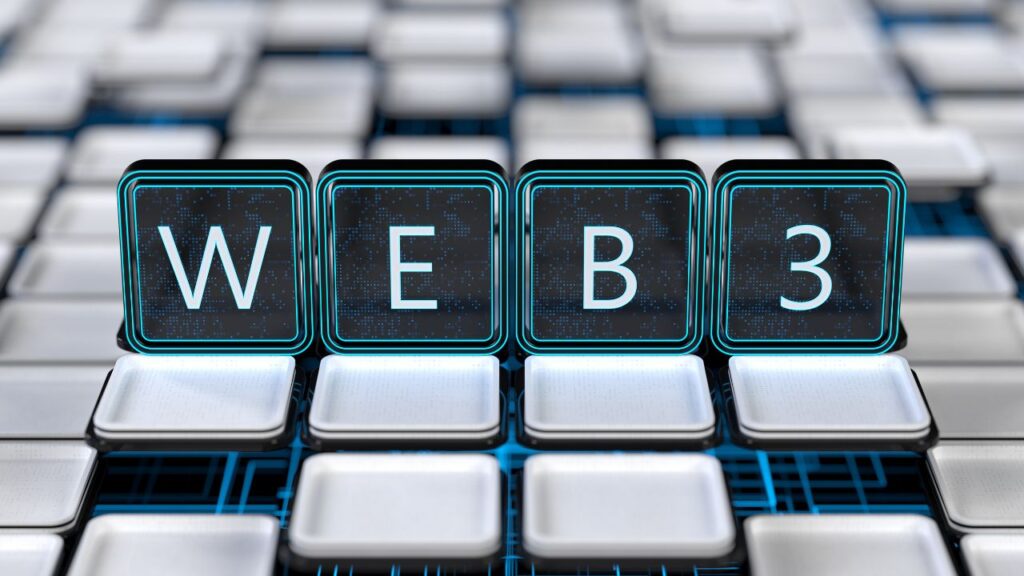Introduction to Web3 In recent years, the term Web3 has been buzzing around tech circles, promising to revolutionize the way we interact with the internet. But what exactly is Web3, and how does it differ from the traditional web we’re accustomed to? Let’s embark on a journey to uncover the mysteries of Web3 and explore its potential to reshape the digital landscape.
Understanding Web3: Breaking Down the Basics To grasp the concept of Web3, it’s essential to first understand its predecessors, Web1 and Web2. Web1, also known as the “read-only” web, consisted primarily of static web pages with limited interactivity. Then came Web2, characterized by dynamic content, user-generated data, and the rise of social media, e-commerce, and cloud computing.
Now, enter Web3. Unlike its predecessors, Web3 aims to decentralize control, foster trust, and empower users by leveraging blockchain technology, decentralized protocols, and cryptocurrencies. In essence, Web3 seeks to create a more transparent, secure, and equitable internet ecosystem.

Key Components of Web3
- Blockchain Technology: At the heart of Web3 lies blockchain technology, a distributed ledger system that records transactions across a network of computers. Blockchains enable transparent, tamper-proof, and decentralized data storage and verification, paving the way for trustless interactions and immutable records.
- Decentralized Applications (DApps): Web3 enables the development and deployment of decentralized applications (DApps) that run on blockchain networks rather than centralized servers. These DApps leverage smart contracts, programmable agreements that automatically execute when predefined conditions are met, enabling trustless transactions and interactions.
- Cryptocurrencies and Tokens: Web3 relies on cryptocurrencies and tokens as native digital assets that power decentralized economies and incentivize network participants. Bitcoin, Ethereum, and other cryptocurrencies serve as mediums of exchange, store of value, and unit of account within the Web3 ecosystem, facilitating peer-to-peer transactions and economic interactions.
- Decentralized Identity (DID): Web3 introduces decentralized identity solutions that empower individuals to control their digital identities and personal data without relying on centralized authorities. Decentralized identity protocols enable self-sovereign identity management, privacy preservation, and secure authentication across various online services and platforms.
- Interoperability and Standards: Web3 promotes interoperability and standardization to facilitate seamless communication and collaboration between different blockchain networks, DApps, and protocols. Standards such as the Interoperability Protocol (IP) and the Web3 Stack Framework define common interfaces, protocols, and conventions to ensure compatibility and interoperability across the Web3 ecosystem.
Applications and Use Cases of Web3
- Decentralized Finance (DeFi): DeFi encompasses a wide range of financial services and applications built on blockchain technology, including lending, borrowing, trading, and asset management. DeFi platforms leverage smart contracts and decentralized protocols to enable peer-to-peer financial interactions, eliminate intermediaries, and provide greater financial inclusivity and accessibility.
- Decentralized Autonomous Organizations (DAOs): DAOs are organizations governed by smart contracts and decentralized decision-making mechanisms, enabling stakeholders to participate in governance, voting, and resource allocation without centralized control. DAOs leverage blockchain technology to create transparent, accountable, and resilient organizational structures that prioritize community consensus and participation.
- Non-Fungible Tokens (NFTs): NFTs are unique digital assets representing ownership or proof of authenticity of digital or physical assets, such as artwork, collectibles, and virtual real estate. NFTs enable creators and collectors to tokenize and trade digital assets securely on blockchain networks, unlocking new opportunities for ownership, monetization, and provenance tracking.
- Decentralized Social Networks: Web3 fosters the development of decentralized social networks that prioritize user privacy, data ownership, and content moderation transparency. These platforms leverage blockchain technology and decentralized protocols to create censorship-resistant, community-driven social media experiences that empower users and promote digital sovereignty.
Challenges and Considerations While Web3 holds immense promise, it also faces several challenges and considerations that must be addressed to realize its full potential:
- Scalability: Scalability remains a significant challenge for blockchain networks, limiting the throughput, speed, and efficiency of decentralized applications and transactions. Solutions such as layer 2 scaling solutions, sharding, and off-chain protocols aim to improve scalability and alleviate network congestion.
- User Experience: The complexity and technical barriers associated with blockchain technology and decentralized applications pose challenges to mainstream adoption and user experience. User-friendly interfaces, educational resources, and intuitive onboarding processes are essential to bridge the gap and attract non-technical users to Web3.
- Regulatory Uncertainty: The regulatory landscape surrounding cryptocurrencies, blockchain technology, and decentralized finance is constantly evolving and subject to uncertainty. Clear and balanced regulatory frameworks are needed to foster innovation, protect consumers, and ensure compliance with legal and regulatory requirements.
- Security and Privacy: Security vulnerabilities, smart contract bugs, and privacy concerns pose risks to the integrity and confidentiality of decentralized applications and user data. Robust security measures, code audits, and privacy-enhancing technologies are essential to mitigate risks and protect users’ assets and privacy in the Web3 ecosystem.
Conclusion: Embracing the Future of the Internet In conclusion, Web3 represents a paradigm shift in the way we perceive and interact with the internet, offering unprecedented opportunities for decentralization, transparency, and empowerment. By harnessing the potential of blockchain technology, decentralized applications, and digital assets, Web3 has the potential to revolutionize finance, governance, social networks, and more, empowering individuals and communities to reclaim control over their digital lives. As we embark on this transformative journey, it’s essential to address the challenges and considerations that accompany the transition to Web3 and work collaboratively to build a more inclusive, equitable, and resilient internet ecosystem for future generations.
Follow – SharePointCafe.Net
